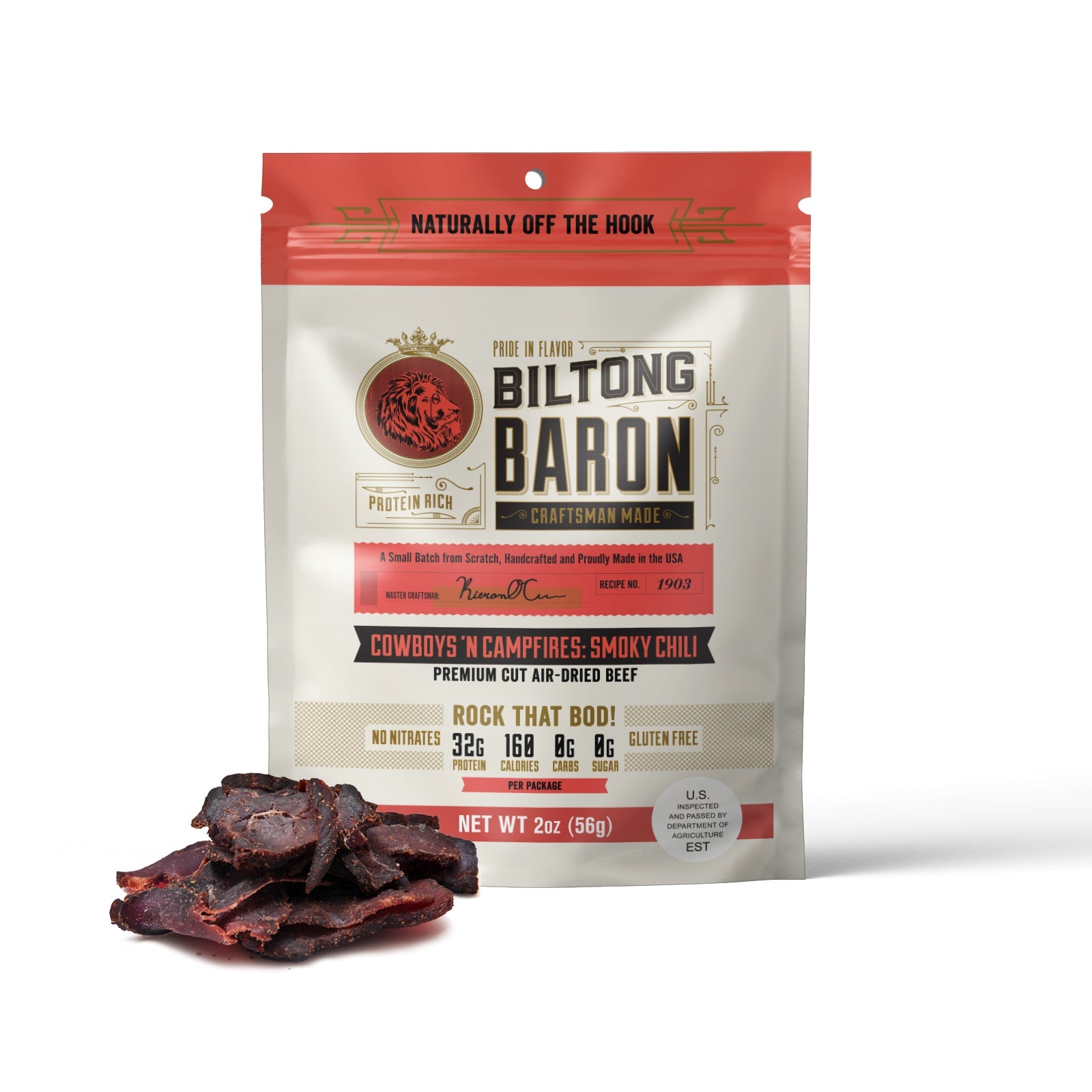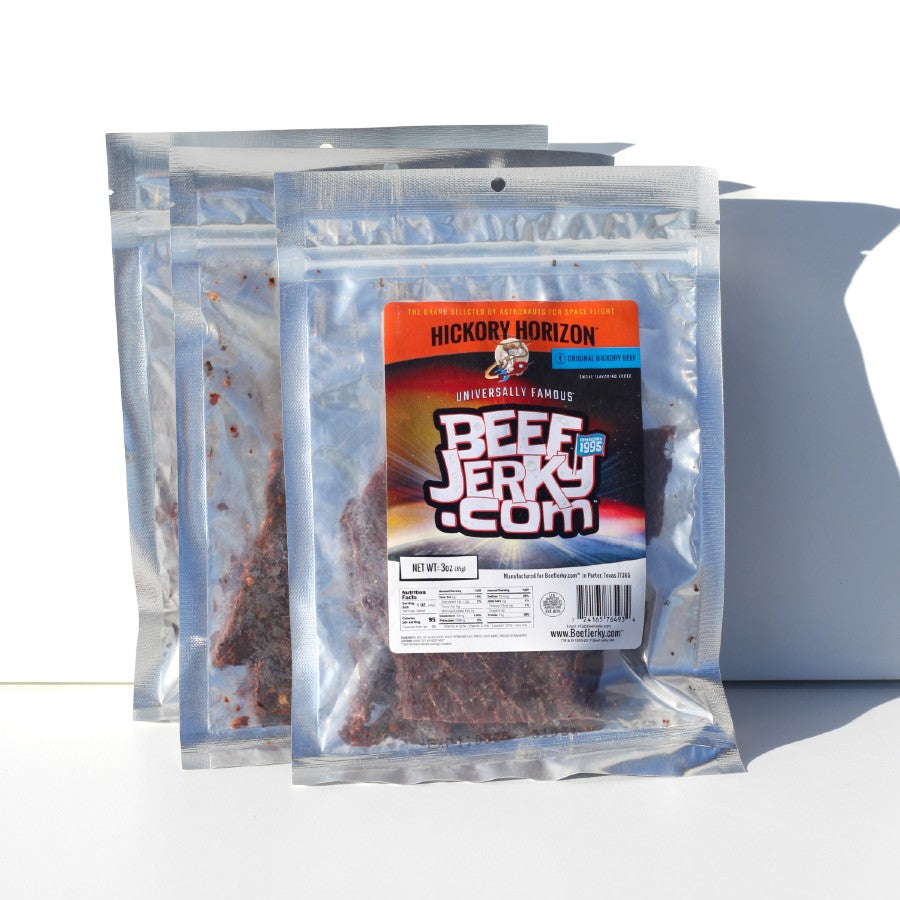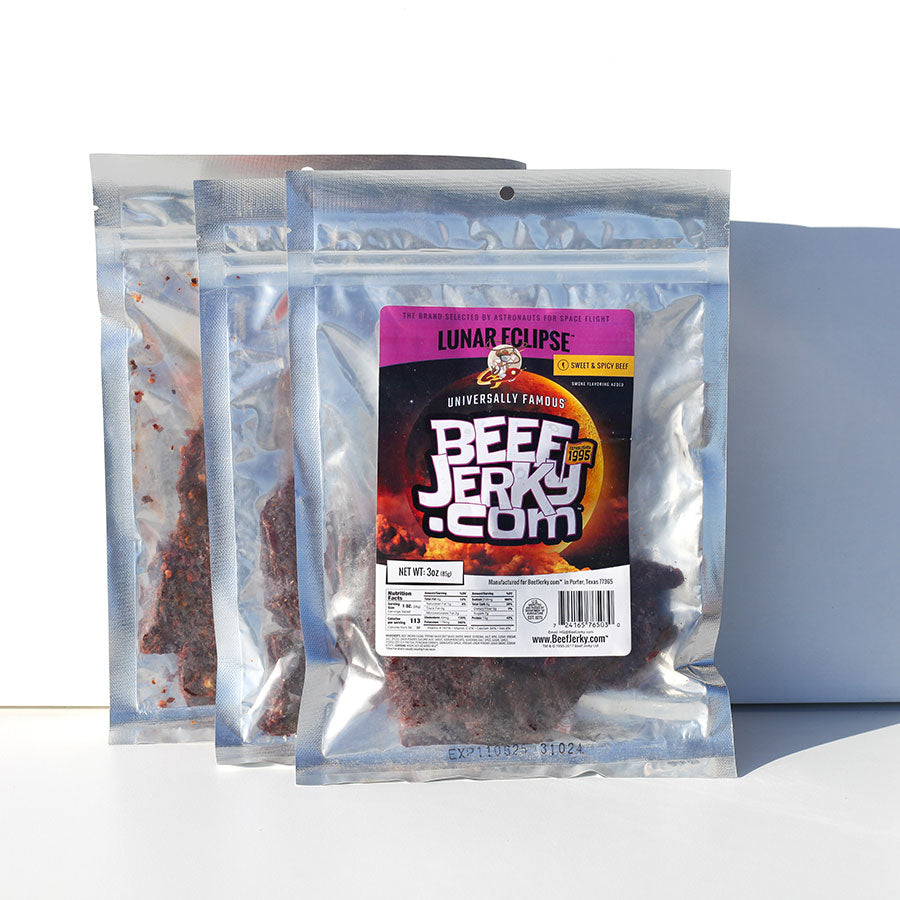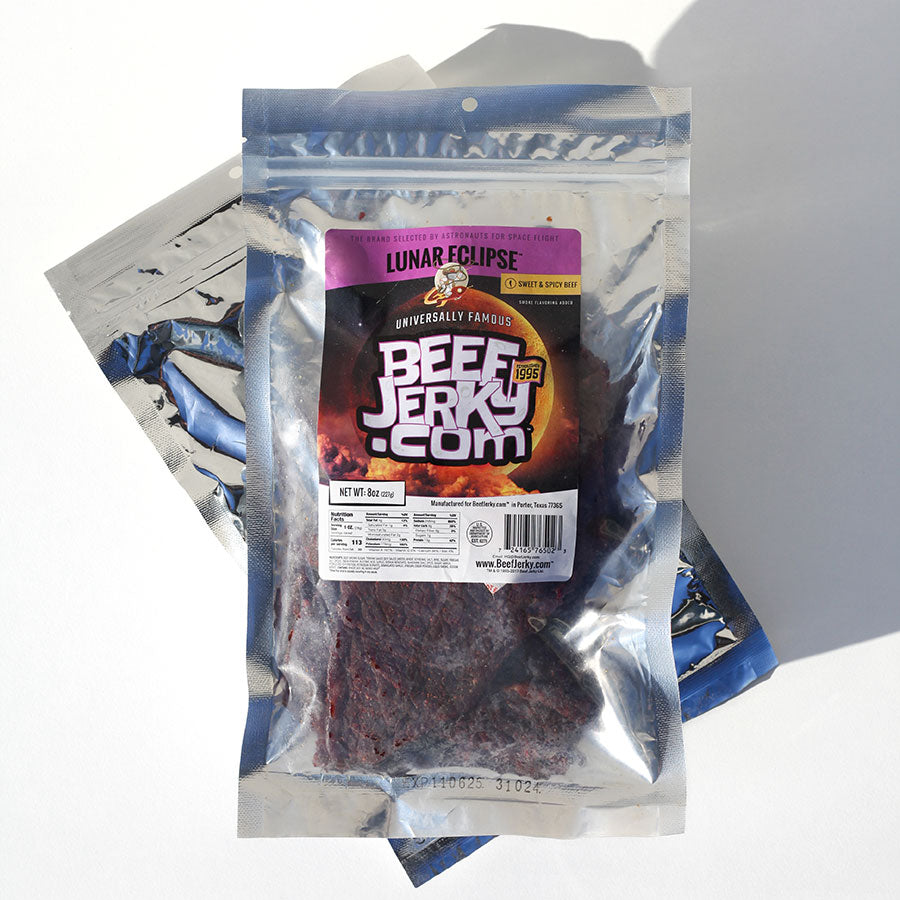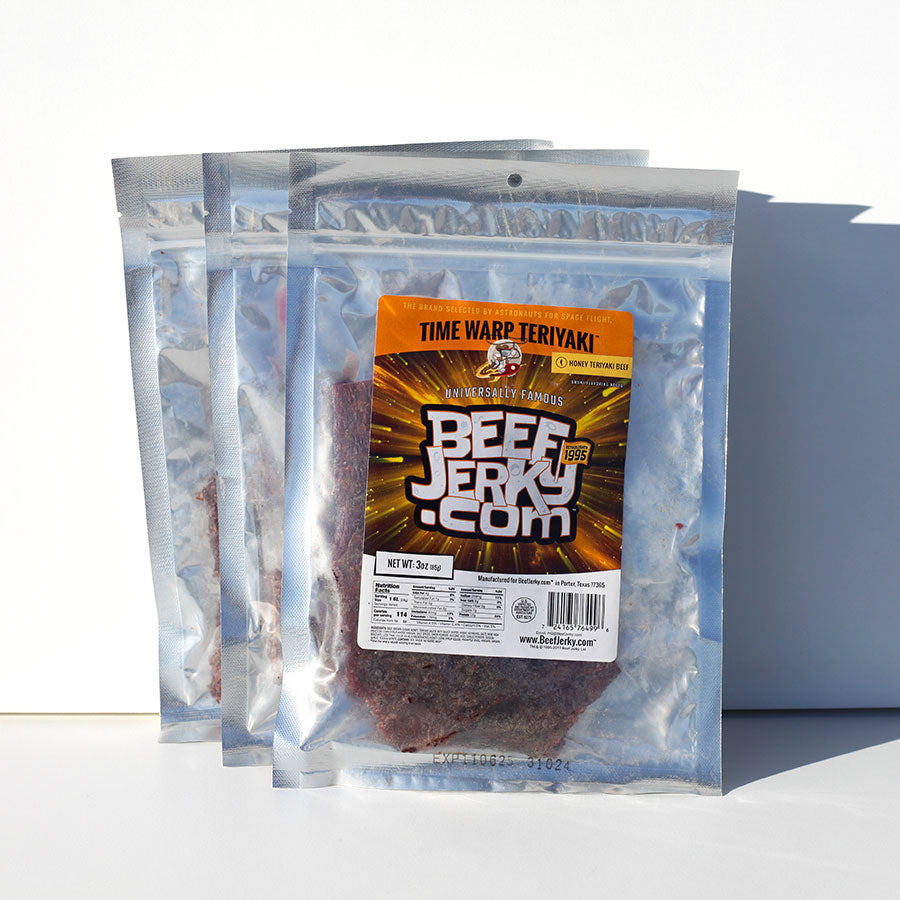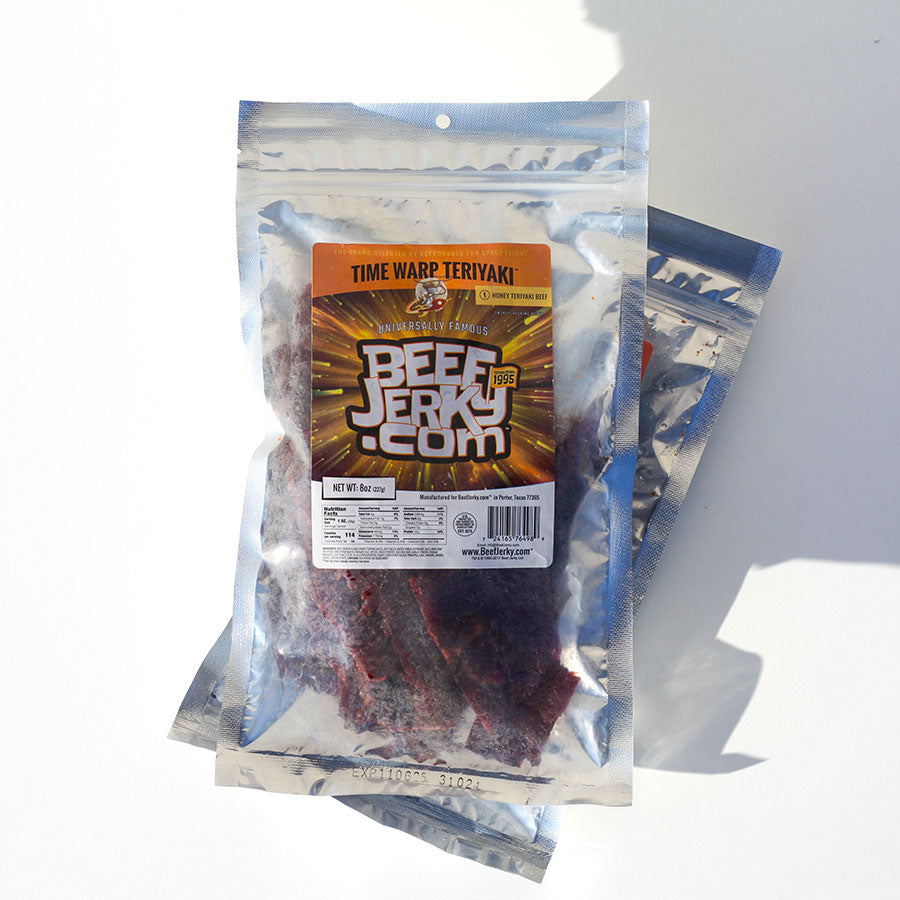-
Recently Viewed
You have no recently viewed items.
-
Featured Brands
- All Products
- About Us
- Contact Us
- Our Blog

Beef Jerky in Mexico: Carne Seca Beef Jerky
People have been eating forms of dried meat for thousands of years. Some versions date back to ancient Mesopotamia, but the closest to modern beef jerky comes from ancient South America via the Incas.
It seems every region has developed its own take on dried meats — it was necessary for survival. After all, folks need protein, and meat doesn’t last unless you preserve it.
Carne seca beef jerky originates in northern Mexico. In Spanish, "carne seca" means "dried meat.” Read on to learn all about this delicious exotic jerky.
[Related: Where Does Beef Jerky Come From? Beef Jerky History]
What Is Carne Seca Beef Jerky?
Carne seca is a premium type of beef jerky. Most carne seca recipes call for eye of round, top round or brisket. No matter what kind of meat people use to prepare it, the meat itself is always low in fat.
Some people may not want to use brisket to make jerky, but it’s easy to pull apart. Just find a lean cut and trim away any excess fat.
When it comes to carne seca seasonings, lime and salt are the standbys. However, many recipes call for chilis, like Anaheim or guajillo chili, for added flavor.
You can eat carne seca on its own or put it in other dishes. It's a popular filling for empanadas, tacos and Sonoran specialty machaca.
Although carne seca was born in Mexico, it quickly grew in popularity among southwestern U.S. states. Early California settlers valued it as a crucial source of protein for long, difficult journeys.
Today, you can find carne seca throughout both North and South America.

"Carne Seca” by Maria Hsu
Beef Jerky vs. Carne Seca
There are a few key differences between carne seca and beef jerky.
The first is the marination method. Unlike other kinds of jerky, people marinate or boil carne seca before they dry it.
Another difference is the thickness of the meat. Your usual jerky can be fairly thick, but carne seca comes in thin, delicate slices.
Carne seca is also drier than most other jerky varieties. Traditional preparation methods call for allowing it to dry in the sun for several days, but smokers and other drying techniques are more common these days.
Carne Seca Flavors
Beef jerky carne seca is highly versatile. It takes on the flavors used in the marinade, so you can get unique taste combinations. Some carne seca features a citrusy flavor thanks to the usual lime marinade, but another batch might be hot and spicy because of the chili in the mix.
Many forms of carne seca boast an incredible smoky flavor. Because carne seca beef jerky slices are so thin, smoke easily permeates the meat and infuses it with zing.
[Related: What’s the World’s Hottest Beef Jerky?]
Is Carne Seca Healthy?
Like most jerky, carne seca is high in protein and low in carbs. That means it’s healthy in moderation (a good rule to live by, actually).
It’s also full of vitamins and minerals. You’ll get plenty of zinc and vitamin B12, as well as small amounts of iron, magnesium and potassium.
However, you should consider the amount of sodium in carne seca. All preparation methods call for salt (it’s a jerky hallmark), so that could be an issue for those watching their sodium intake.
All in all, carne seca beef jerky can be a great addition to a balanced diet. It’s shelf-stable and can last up to six weeks when stored properly. You’ll need to keep it in a closed container in a cool, dark place.
[Related: Is Beef Jerky Healthy?]
How to Make Carne Seca Beef Jerky
Making old-fashioned carne seca beef jerky can be time-consuming. When following the traditional method, you’ll hang the meat out to dry in the sun, usually for several days.
What’s the good news, then? Well, you can make your own quick carne seca in just a couple of hours using this carne seca beef jerky recipe.
What You’ll Need
Before you start cooking up carne seca, gather the necessary ingredients and tools.
Here are the staples:
- 2 pounds low-fat meat (eye of round or brisket is ideal)
- 1 lime
- ½ tablespoon salt
- 1 chili (that is, if you want some heat — and choose your favorite variety)
- Shallow container (like a plastic tray with a sealable lid)
- Dehydrator or smoker
If you don’t have a dehydrator or smoker, you can use an oven. It’s not as fast or smoky-tasting, but it’ll work.
Please note this is a very basic carne seca recipe. You can get much more complex with your marinade, preparation method and cut of meat. Frankly, we’re here to help you get carne seca in your mouth ASAP.
[Related: How to Make Beef Jerky: Your Guide to Homemade Beef Jerky]
Step 1: Prepare the Meat
- Trim the fat from the meat.
- Cut the meat into ¼- to ½-inch slices.
Step 2: Make the Marinade
- Toast the chili in a pan for about 30 seconds per side until evenly cooked.
- Remove the stem and seeds.
- Run the chili pod through a spice grinder.
- Mix the resulting chili powder with the salt.
- If you’re not using chili, skip to step 3 (but bring the salt).
Step 3: Mix in the Meat
- Place the thin strips of meat in the shallow container.
- Sprinkle the spice mixture (chili and salt or just salt) on top of the strips.
- Cut the lime in half, and squeeze the juice onto the strips.
- Coat each slice evenly in the chili, salt and lime marinade.
- Note: You’ll probably need to work it in with your hands. It’s good for you — get your hands a little dirty!
Step 4: Let It Sit
- Wash your hands.
- Seal the shallow container.
- Place the sealed container in the fridge for three hours minimum (overnight is best).
Step 5: Dry and Check the Meat
The final step depends on your equipment of choice.
Using a Dehydrator
- Hang the meat from the racks.
- Set the temperature to 145°F.
- Let sit for about 2.5 hours.
- Rotate the racks from the back to the front about halfway through.
- Remove the meat.
Using a Smoker
- Hang the meat from the racks.
- Set the temperature for 150°F.
- Let sit for about 2.5 hours.
- Rotate the racks at around the halfway point.
- Remove the meat.
Using an Oven
- Cover the oven racks with aluminum foil (plenty of it, mind you).
- Set the temperature to 180°F.
- Drain the marinated meat.
- Place the strips on the foil-covered racks.
- Prop the oven door slightly open to allow moisture to escape.
- Let sit for about 6 hours, and check the meat periodically for dryness.
- Remove the meat.
Checking the Meat
- Make sure the meat’s dry and fully cooked (no raw beef, please).
- Note: The strips should be fibrous and pliable when bent.
- Taste it! Oh, and make sure it’s cool enough to not burn your mouth before you start eating. We know it’s tempting.
Carne Seca: A Mexican Specialty
Carne seca beef jerky started in Mexico, but word tends to get around when something’s delicious.
Its piquance, versatility and smokiness have made it a staple in households throughout the Americas, and now you can enjoy it, too! (But honestly, you’ll still find the best carne seca south of the border.)
Explore Other Exotic Jerky Flavors
Eager to try other types of exotic jerky? Lucky for you, the Jerky Universe has guides to jerkies from all around the world, including these tasty types:
But there's even more to explore in the Jerky Universe — follow us on social and subscribe to our newsletter below!
- Choosing a selection results in a full page refresh.

